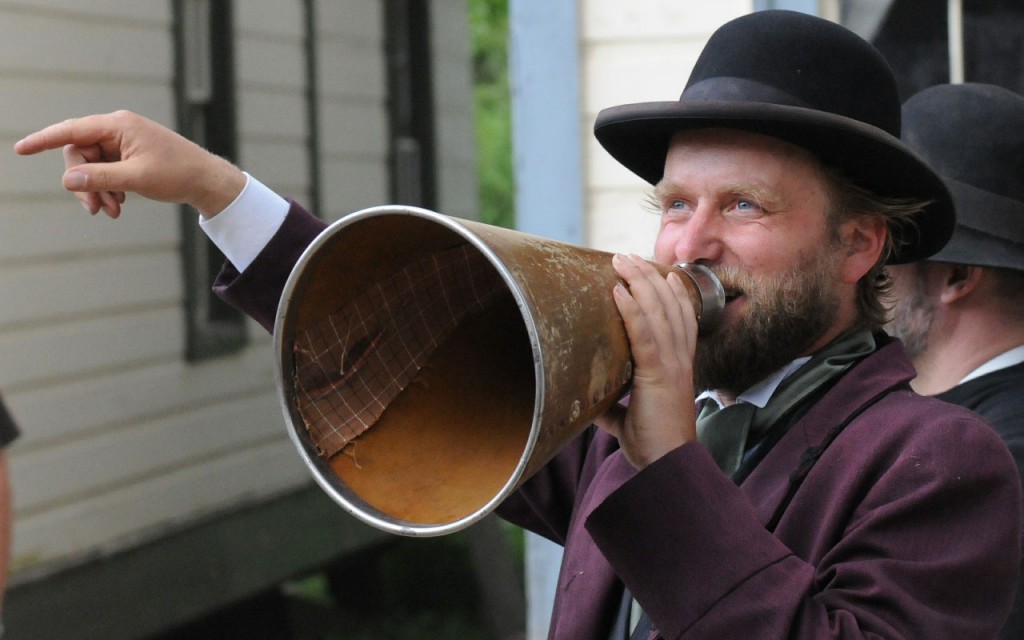
Draw people in to read your piece with an engaging headline.
Photo by Mary Ann Clarke SCott (Flickr)
It doesn’t matter if it’s fiction or nonfiction: Coming up with a good title can be the hardest part of any project for some freelance writers. To make matters even more difficult, nowadays, writers can’t simply write a header and walk away — there are many different types of titles that writers have to deal with. When writing for the Web, title tags are the most important, but how do they differ from other titles, headers, and headlines?
The Classic News Headline
News headlines typically come from the tradition of newspapers, whose only requirement was that it summarized the contents of an article and fit within a given amount of space. They should be short and dramatic or interest-grabbing.
Here are some famous examples from history:
- Men walk on moon (The New York Times, 1969)
- Headless body in topless bar (New York Post, 1983)
- Assassin kills Kennedy – Lyndon Johnson sworn in (Chicago Tribune, 1963)
- ‘We saw the sea coming, we all ran. But God saves little’ (The Times of India, 2004)
- Mandela goes free today (City Press, 1990)
When it comes to news headlines, usually the shorter, the better. Also, they should be dramatic or clever, so that they grab a person’s attention. In fact, if they’re catastrophic, it’s a great news day. Headlines like these have a fair amount of freedom. You can use sentences, fragments, quotes, phrases, or even just one word. Typically, news headlines have to fit within a given amount of space, which varies depending on the page layout and the font size. Depending on the type of story and its position on the page, editors have more or less to work with in terms of length.
Get in, convey the facts dramatically, and then get out: That’s what news headlines are about.
Title Tags

A title tag the client will love is one that includes keywords and gets people to click.
Photo by SEOPlanter (Flickr)
While yes, a title tag should include a title in some way, they are almost nothing like a classic news headline. A title tag is what a visitor will see in Google before clicking on the page. It also appears at the top of your browser. For search engine optimization (also known as SEO), the title tag often includes popular keywords. It should never be a sentence; however, it should be easy to read. Also, the brand should be mentioned at one point, if it’s going on a company website.
Here are some best practices for writing title tags for SEO purposes:
- The first few words should be popular keywords and be relevant to what the page is about.
- The content should be easy to read and grammatical. It shouldn’t be comprised of any sentences but rather short phrases.
- Phrases should be broken up by the pipe character ( | ). Ampersands (&) can be used within phrases to save space.
- Users should be able to read the title tag quickly and make a decision within about a second on whether or not they want to click on it.
- Include the brand or company name at the end of the title tag. If there is space, include a few words about how this company is unique.
- The title tag must be between 55 and 70 characters long, including spaces. If it is any longer than that, Google will cut it off and insert an ellipsis (…).
However, note that the marketing, psychology, and art of writing a headline should not be completely forgotten when writing a title tag. But it should primarily contain what the page is about.
To find examples, simply type a topic into Google and see what the first few pages are. Here are some fictional examples of title tags:
- Red Coffee Makers | Unique Coffee & Espresso Machines | Shop.com
- Purple Squirrel Plush | Toymakers.com | American-Made Dolls
- Coffee Grounds | Best Coffee Shop in Fictiontown, CA
- How To Write The Perfect Résumé | Résumé Writing | Brand Name
The goal of the title tag is different. Say what the page is about, entice users to click by showing that this is what they’re looking for, and tell them who’s giving it to them.
Clickable Social Headlines

Lure people to click on your social post with an engaging headline.
Photo by mkhmarketing (Flickr)
In theory, social media headlines should be a mix between news headlines and title tags, right? Well, in recent years, there has been a bit of discussion over credible versus “clickable” headlines. Clickable headlines create hype. They get us wound up, usually for nothing. For example, you may see a headline like, “This [insert topic here] is the best thing you’ll see all week!” Top 10, 11, 20, and 100 lists are fairly commonplace. You can also see phrases like “you’ll never believe” and “what happened next changed everything.” Words like “incredible” are often found in social headlines and almost never found in news headlines or title tags. Also, these headlines tend to include rhetorical questions, a news and website-writing no-no.
Here are some fictional examples of “clickbait”:
- You’d Never Expect These Kids To Handle Such a Difficult Topic In Such a Heartbreaking Way.
- This Veteran’s Speech Blew My Mind — And Made Me a Little Sick
- Why Is This Girl Dancing? The Answer Will Shock You
- Change Your First-World Viewpoint in 64 Seconds
Social media headlines seek to inspire curiosity. It’s what Upworthy likes to call “the curiosity gap.” These titles are like the plea of a needy friend who just wants your attention for a few seconds before you go do something else. They’re causal, colloquial, and hope to be inspiring.
In the end, however, people really don’t appreciate being tricked. It seems like users are getting a bit irritated by these types of headlines. Not every link will “change your life.” Claiming so can be somewhat annoying after a time. Will consumers wise up? Will headlines via social media return to something akin to newspaper headlines? The next few years will tell us.
